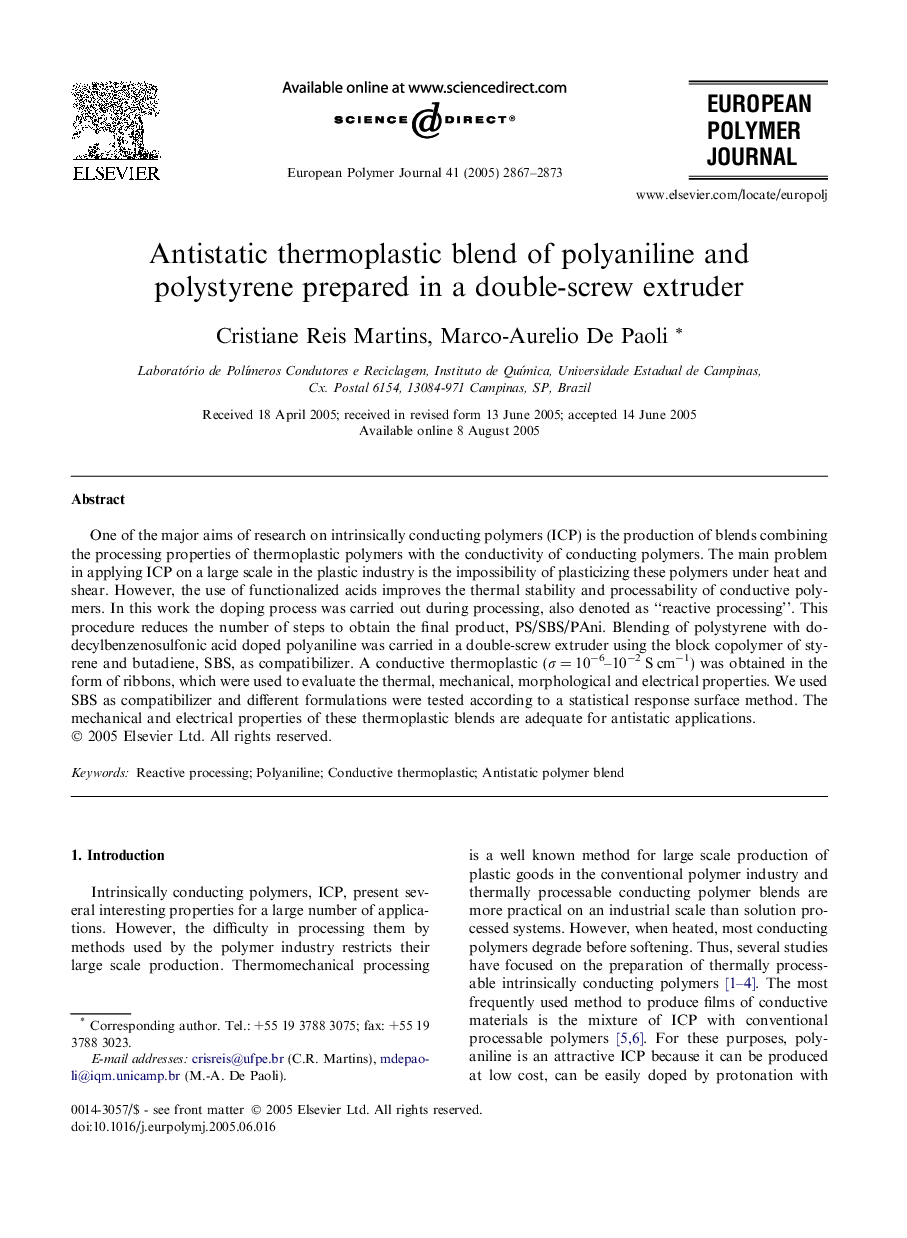| Article ID | Journal | Published Year | Pages | File Type |
|---|---|---|---|---|
| 1397046 | European Polymer Journal | 2005 | 7 Pages |
One of the major aims of research on intrinsically conducting polymers (ICP) is the production of blends combining the processing properties of thermoplastic polymers with the conductivity of conducting polymers. The main problem in applying ICP on a large scale in the plastic industry is the impossibility of plasticizing these polymers under heat and shear. However, the use of functionalized acids improves the thermal stability and processability of conductive polymers. In this work the doping process was carried out during processing, also denoted as “reactive processing”. This procedure reduces the number of steps to obtain the final product, PS/SBS/PAni. Blending of polystyrene with dodecylbenzenosulfonic acid doped polyaniline was carried in a double-screw extruder using the block copolymer of styrene and butadiene, SBS, as compatibilizer. A conductive thermoplastic (σ = 10−6–10−2 S cm−1) was obtained in the form of ribbons, which were used to evaluate the thermal, mechanical, morphological and electrical properties. We used SBS as compatibilizer and different formulations were tested according to a statistical response surface method. The mechanical and electrical properties of these thermoplastic blends are adequate for antistatic applications.
